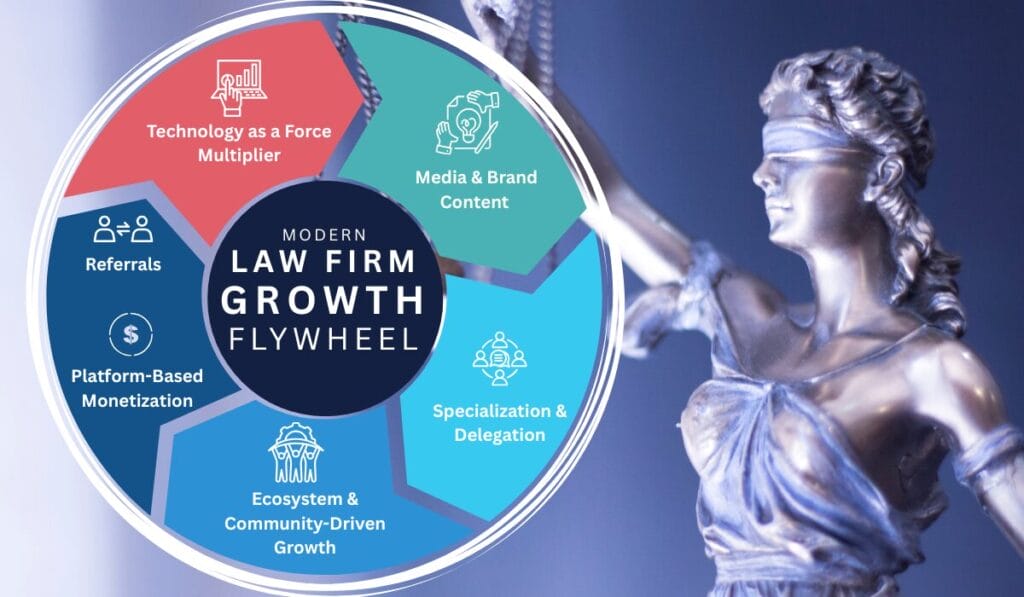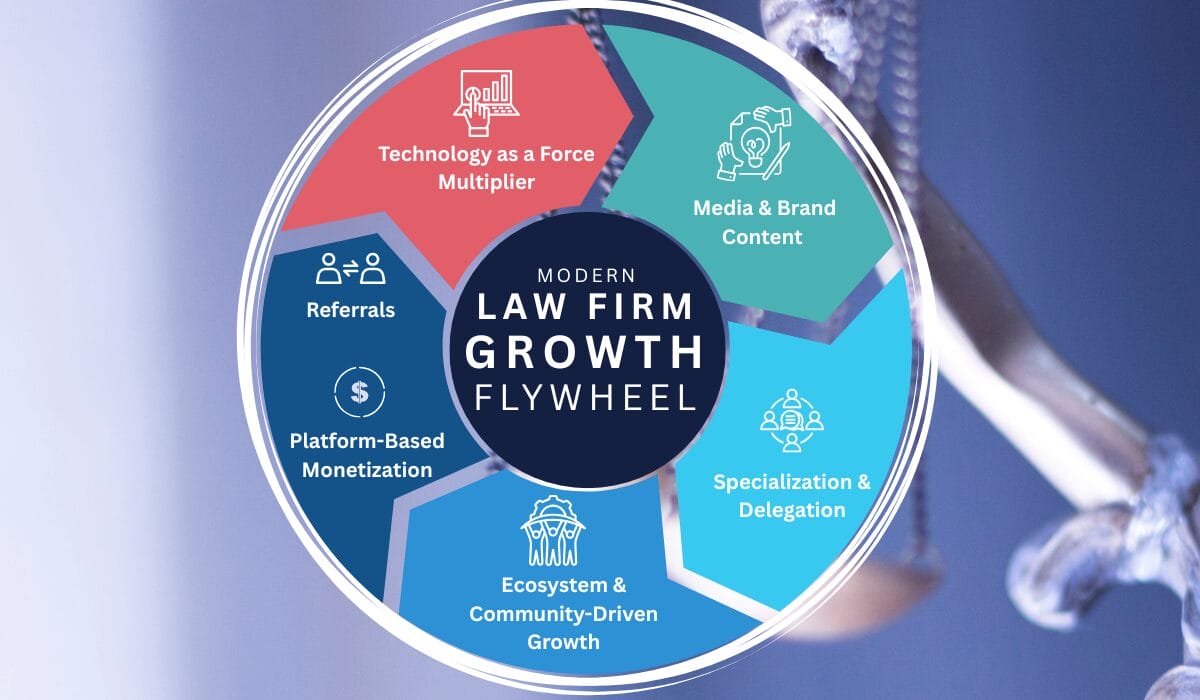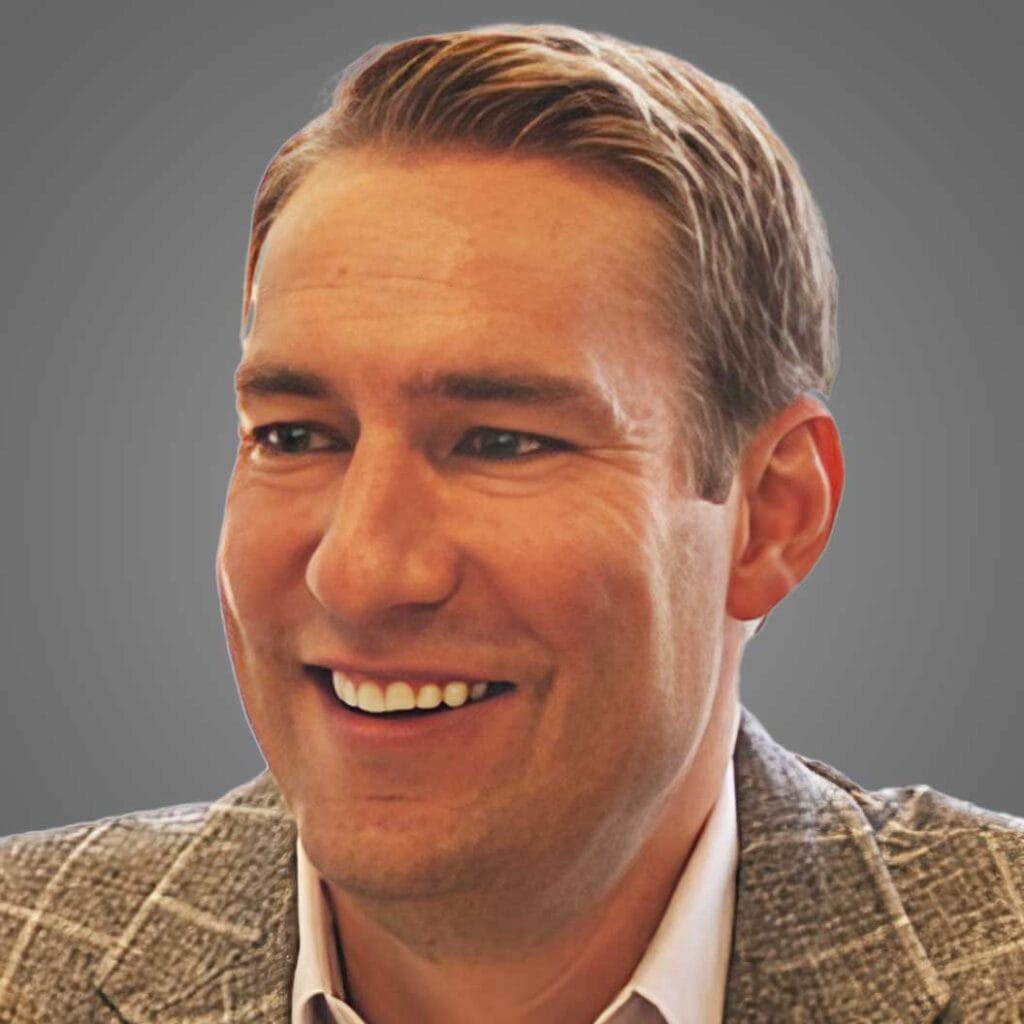Rethinking Law Firm Growth

Growing a law firm traditionally meant hiring more attorneys, opening new offices, and chasing ever-higher overhead. But that playbook is
losing steam. A new model is emerging — one centered on focus, technology, collaboration, and strategic delegation.
Bob Simon didn’t just build a law firm. He engineered a legal flywheel — an integrated ecosystem of businesses that reinforce one another, generating sustainable, platform-driven growth. His model challenges the assumptions many law firm owners still cling to: that bigger means better, that all leads must be handled in-house, and that growth is measured by headcount.
At Blue Sky Legal, we’ve watched this model evolve — and we’ve seen firsthand how platforms like Attorney Share are reshaping how legal businesses grow. If you’re a law firm owner or legal marketer thinking about scale, there are hard lessons and powerful insights here. And they all point in the same direction: it’s time to rethink the traditional law firm growth strategy.
The Flywheel Structure: Focused, Distributed, Scalable
Bob Simon is the co-founder of The Simon Law Group — a firm known for its high-stakes trial work and its strong referral network. But that’s only one gear in the machine.
Over the past decade, Simon has built a broader platform that includes:
- Attorney Share – a referral and lead-tracking platform designed to help lawyers monetize inbound leads, refer out non-core cases, and receive referrals from others.
- Justice HQ – a nationwide attorney membership community that offers shared infrastructure (offices, resources, tech support) and peer collaboration.
- Justice Team Network – a media and content brand that produces videos, podcasts (like Bourbon of Proof), and educational materials aimed at lawyers and the broader legal public.
Each of these businesses solves a pain point in the legal ecosystem. Together, they form a loop of value: the law firm tries the right cases, Attorney Share distributes or receives everything else, Justice HQ builds the community, and Justice Team Network amplifies it all through content.
It’s a growth model that rewards specialization, not generalization. In Bob’s words from his recent appearance on the Managing Partners Podcast:
My firm is almost all referral-based. Lawyers send us their cases to litigate or try… Sometimes it’s you, sometimes it’s not. [1]
Instead of trying to own the whole stack, Simon owns the connection points — between clients, lawyers, platforms, and the legal community.
Referral-First Isn’t a Compromise. It’s a Strategy.
Traditionally, many firms treated referrals as a consolation prize. If a case wasn’t in your jurisdiction or practice area, you sent it away and hoped for a thank-you. But platforms like Attorney Share are redefining that dynamic — and Simon has turned it into a cornerstone of his firm’s model.
“How do we get the case to the best lawyer for that case?” he explains. “That’s the vision.” [2]
Attorney Share allows attorneys to post, receive, and track referred cases in real time — with transparency, automation, and accountability. Lawyers who generate leads but don’t litigate can easily hand them off. Firms with excess demand can absorb new cases. Everyone benefits — including the client, who’s placed with the right lawyer faster.
We’ve seen this firsthand at Blue Sky Legal. The interface is intuitive. The tracking is seamless. The monetization opportunity is real. And most importantly: it changes how you think about your intake process. Every lead becomes an opportunity — even if you don’t take the case.
This is especially valuable for firms spending heavily on advertising. If 30–40% of your leads don’t match your ideal case profile, why let them die in a spreadsheet? With Attorney Share, those leads become value — for your firm, your partners, and your brand reputation.
Delegate, Specialize, Repeat
Another pillar of Simon’s model is intentional delegation. He doesn’t try to run everything himself.
“You can’t have this shotgun approach… You have to have infrastructure. You have to have structure. You have to have a dedicated time to do everything.” [3]
Simon and his brother Brad divide their responsibilities. Each company has its own leadership. Weekly 30-minute standups and clear task management tools (like Asana) keep things moving without bottlenecks.
This is more than operational advice. It’s a mindset shift for law firm owners: Stop doing everything. Start building a structure where you do what you love — and outsource or delegate the rest.
Attorney Share reinforces this. If your firm doesn’t want to litigate soft-tissue auto cases, you don’t have to. Refer them. Track them. Monetize them. If you love trials but hate intake, build an intake partner network. If you’re a volume firm but want to shed low-margin work, distribute it.
Growth isn’t about doing more. It’s about doing less, better, and letting systems and people take care of the rest.
Technology as a Force Multiplier
Simon’s teams are among the first to adopt legal tech at scale. In the podcast, he describes how AI tools like CoCounsel and EvenUp are already saving time on depo prep, demand letters, and early case assessment.
This AI-powered efficiency allows his team to review more leads, faster — and decide immediately whether to sign the client, refer them, or drop.
“We can go through cases quickly to see if it’s something we want to take. If the case isn’t for us, we push it to Attorney Share.” [4]
That blend — of human judgment, platform-based distribution, and AI-enabled triage — is the future of modern law firm intake. The traditional “ intake + CRM + spreadsheet + follow-up call next week ” model can’t keep up.
What Law Firms Should Take Away
Bob Simon’s ecosystem isn’t about being everywhere. It’s about being strategic, specialized, and connected.
For law firm owners, three clear takeaways emerge:
- Stop chasing volume. Focus on what you’re great at. Build a flywheel around that expertise.
- Make referrals part of your strategy. Platforms like Attorney Share make it easy to earn from non-core cases — and to build relationships with firms doing the same.
- Think in ecosystems, not silos. Your law firm doesn’t have to do everything. It needs to plug into the right systems — tech, media, community, and referral.
Simon’s model works because it honors a truth most law firms resist: you can’t scale everything. But you can scale the right things — with the right partners, tools, and mindset.
We’ve seen it. We recommend it. And we believe it’s where legal marketing and firm development are headed.
Now is the time to rethink how your firm grows — and build a model that’s intentional, modern, and connected.
Sources & References
- Managing Partners Podcast (YouTube), March 2025 – Watch the full interview at [01:47] where Simon discusses his referral-first law firm structure.
- Ibid, [02:19] – Overview of the Attorney Share platform and its vision.
- Ibid, [03:19] – Discussion of intentional delegation and time management across ventures.
- Ibid, [20:00] – Simon explains how AI streamlines intake and when they refer cases out.


